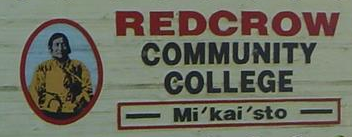Áíksikksiksi – Polygonum amphibium L. (Bitter-root)
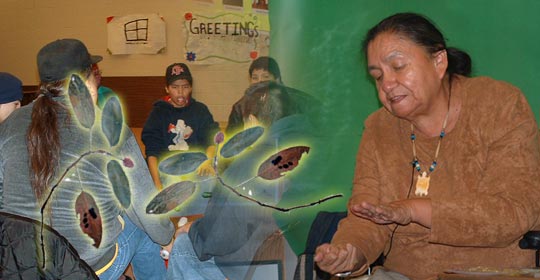
Kainai Drummers. Carolla teaching us about Water Smartweed.
Learn more about Water Smartweed:
Áíksikksiksi
Aiksikksiksi anniiw nahk Elder Carolla Calf Robe iitaisaisski otsitotsikahkohpi. Mo Niipomahkatoyiiksistsikaato’si aiksikssikottskapistsiskitsiyaw. Iikommspika’piw nitaisiiko’tsi’p aiksikksiksi. Ikkai’naksimiko otsitaisaisskihpiaw. Carolla ihtaotoitsikatoom ma akitaisttsohksistonniw. Awawanihtsi’p mi aiksikksiksi ki aistsitato’ki mi soopoyikkstakkssin iikohtayisksani’tsi’p otsitaisttsihpi. Matsitapssoka’piwa isttsoohtokssin ki isttsispssin.
Water Smartweed
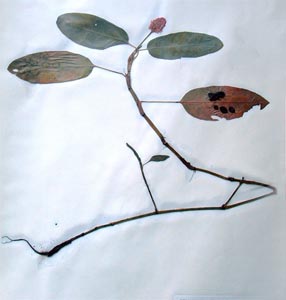
Polygonum amphibium L.
Galileo Educational Network
Elder Carolla Calf Robe told us that Bitter-root grows in swampy places on the reserve.
In July, the whitish-purple flowers bloom and look like a spike. The leaves are about 10-20 cm long and are a deep green. Carolla says that there is no easy way to pick Bitter-root, they are collected from ponds and swampy areas and it is messy! You just have to put on your gumboots and go right in; sometimes you have to go knee high in the water to find some. She told us that when the roots are picked and dry, sometimes there is confusion with Rat-root and Bear-root. They all look the same. The difference is that Bear-root has a strong flavor and Rat-root smells different from Bitter-root. You pick the root in the late fall. When the root is soft, you can string the roots by piercing it with a needle. You should let them air dry on the string.
Carolla uses Bitter-root for sore throats. The root tastes very bitter when you suck on it but when you swallow the juice it numbs the pain. If you are getting a cold and you treat it early by sucking on the root, you usually get rid of it. Sucking the root also helps earaches and headaches. Carolla crushes the root into a powder and gives it to people who are singers in pow-wows. If they make a tea and gargle with it for two days before the pow-wow, it strengthens their voices. Bitter-root works better than throat lozenges.
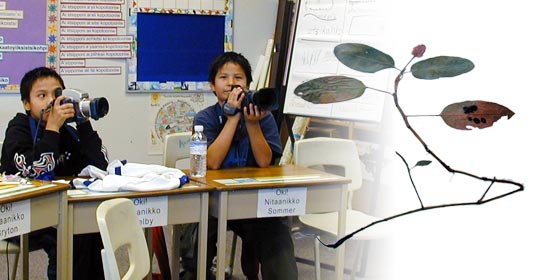
Shelby and Japheth both learning to use the digital video equipment.
(Glenbow Museum. (2005). Nitsitapiisinni Exhibit. Calgary, Alberta: Blackfoot Gallery Committee)
Renouée amphibie
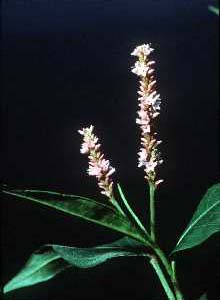
Polygonum amphibium L.
Robert H. Mohlenbrock @ USDA-NRCS PLANTS Database
L’aînée Carolla Calf Robe nous a dit que la renouée amphibie pousse dans les endroits marécageux de la réserve.
Ses fleurs blanc-pourpre sortent en juillet et elles prennent la forme d’épis. Ses feuilles vert foncé mesurent de 10 à 20 centimètres de long. Carolla dit que la renouée amphibie ne se cueille pas facilement, car il faut aller la chercher dans les étangs et les marécages! Il faut mettre des bottes en caoutchouc et aller dans l’eau, parfois jusqu’aux genoux. Elle nous a dit qu’une fois cueillie et séchée, cette plante est souvent confondue avec d’autres plantes semblables. Les racines de la renouée amphibie doivent être cueillies à l’automne. Quand les racines sont molles, nous pouvons les enfiler sur une corde en les perçant avec une aiguille, puis les laisser sécher à l’air.
Carolla se sert de la renouée amphibie pour traiter les maux de gorge. Sa racine est très amère quand nous la suçons, mais le jus qui en sort gèle la douleur. Les personnes qui commencent à avoir le rhume et qui se mettent à sucer ces racines sans tarder peuvent généralement s’en débarrasser rapidement. Sucer les racines aide aussi à guérir les maux d’oreille et de tête.
Aussi, Carolla met cette racine en poudre et la donne aux chanteurs des pow-wow. S’ils se gargarisent à l’aide d’un thé de renouée amphibie pendant les deux jours précédant le pow-wow, ils ont une meilleure voix. La renouée amphibie donne de meilleurs résultats que les pastilles pour la gorge.

Polygonum amphibium L.
W.L. Wagner @ USDA-NRCS PLANTS Database
- Calf Robe, C. (personal communication February 1, 2005)referred to Bitter Root.
- Kerik, Joan. (1979). Living With The Land: Use of Plants by the Native People Of Alberta. Edmonton, Alberta: Provincial Museum of Alberta.
- Vance, F.R., Jowsley, J.R. & Mclean, J.S. (1984). Wildflowers Across The Prairies. Saskatoon, Saskatchewan: Western Producer Prairie Books.



